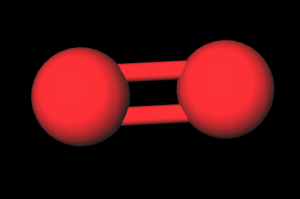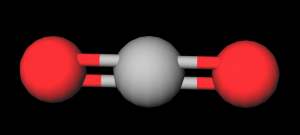Today I had the pleasure of volunteering at Corvallis High School in Julie Williams’ Sustainability and Society classroom with Jillian Gregg from OSU. Jillian’s paper on “Urbanization effects on tree growth in the vicinity of New York City” made the cover of Nature magazine in 2003. These days she is researching and teaching climate change at Oregon State University and advocating for change.
Jillian had 3 stations setup for groups of students to learn about different aspect of climate change. These activities can be done with kids from 1st grade to high school as the concepts are simple to understand.
Station 1 – Watch CO2 warm the air?!! WHAT???
How does CO2 warm the air and why it's a problem
Equipment
- Tape
- Small piece of glass
Materials
- 2 bags zip lock
- 1 molecule kit https://www.amazon.com/dp/B01NCU854K/
- 1 infrared camera https://www.amazon.com/dp/B075F61GFH/
Instructions
- Build O2 & N2: Assemble two atoms (red) with a rigid connection & assemble two blue atoms with a rigid connection

- Build CO2: Take a black atom and using the flexible

- Fill a zip lock bag by exhaling in to the bag. Zip up back to lock in some CO2 air, label it as CO2. Fill another bag with air and zip it up label it as Air.
Notes
- What are some sources of carbon dioxide and methane?
- What are ways to limit carbon dioxide?
- How can we remove carbon dioxide?
Station 2 – Albedo Effect
Albedo Effect
Equipment
- Heat lamp with stand
Ingredients
- 1 Handheld thermometer https://www.amazon.com/dp/B00837ZGRY/
- 6 Small dishes
- 1 container black sand https://www.amazon.com/dp/B07C4ZY2WT
- 1 container brown sand
- 1 container white sand
Instructions
- Pour each of the colored sands in to the small dishes.
- Place 3 of each color sand dishes together and away from the heat lamp.
- Place 3 of each color sand dishes together under the heat lamp.
- Measure the temperatures of the dishes not under the heat lamp.
- Measure the temperatures of the dishes under the heat lamp.
- Ask the student why they think there is a difference.
Station 3 – Acidify Water with Carbon Dioxide
Acidify water with CO2
Ingredients
- Straws
- pH Test Strips https://www.amazon.com/dp/B06XG6MYXD
- small containers to hold water
- tap water
Instructions
- Fill containers with water.
- Have students test the pH of the water and record their finding.
- Ask students to use the straws to blow bubbles in the water.
- Have students re-test the pH of the water and record their finding.
Notes